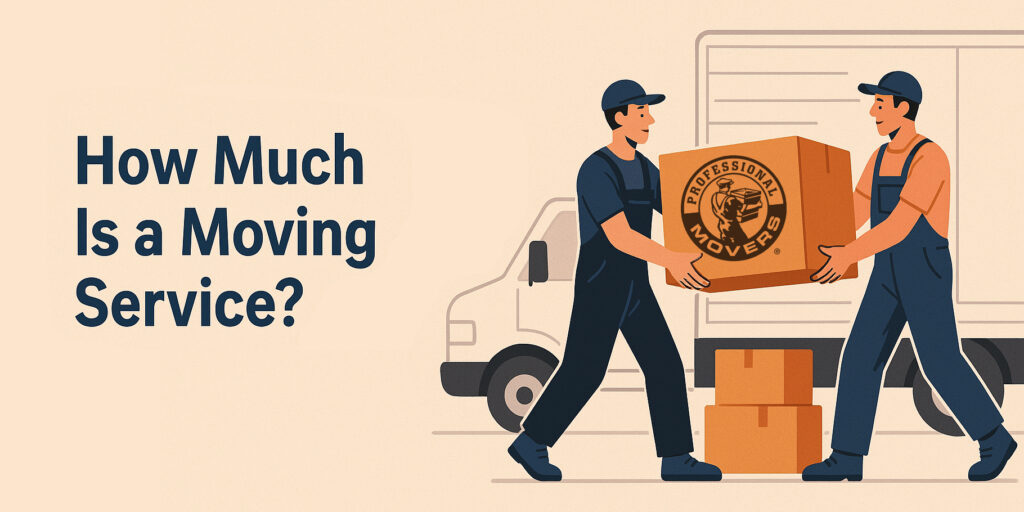
Planning a move involves numerous considerations, with cost being a primary concern for most people. Understanding what influences moving service prices helps you budget effectively and avoid unexpected expenses. From distance and item volume to additional services and timing, several factors determine your final bill. Working with a dependable moving team can provide clarity on costs and ensure you receive accurate estimates tailored to your specific situation. This article breaks down the key elements affecting moving service pricing to help you prepare financially for your upcoming relocation.
Factors Influencing Moving Service Costs
Several vital elements determine the expenses associated with hiring a moving service. The volume of items being transported is a primary factor—more belongings require larger trucks, resulting in higher costs. The service level you choose also impacts the overall price. Full-service moves that include packing, loading, and unloading naturally cost more than basic moves where you handle the packing yourself. Timing plays a crucial role too. Moving during peak seasons or weekends typically results in higher prices due to increased demand. Additionally, the distance between locations significantly affects cost. Longer distances require more fuel and time, leading to higher prices. Understanding these factors helps you make informed decisions when planning your move.
Distance: A Major Price Factor
The distance between your current and new locations greatly influences moving service costs. Moving companies calculate expenses based on the distance they must travel from origin to destination. They typically charge according to mileage traveled, measured in miles or kilometers. Greater distances lead to higher costs due to increased fuel consumption, labor hours, and vehicle wear and tear.
Long-distance moves (generally exceeding 100 miles) cost more than local moves because of additional logistics. Factors such as tolls, overnight accommodations for crews, and potential delays contribute to the overall expense. The transportation method—whether moving truck, container, or freight trailer—also affects pricing based on distance covered. Understanding distance-related costs helps you better estimate and plan for your relocation budget.
Volume of Items: Impact on Price
The quantity of items being moved significantly influences your final moving service price. More items occupy more space in the moving truck, directly affecting the cost. Moving companies typically base their charges on the space your belongings occupy and the weight of the load.
To determine accurate volume, moving companies often conduct surveys or in-home assessments. This helps them calculate the number of items, their sizes, and any special handling requirements. Providing detailed information during this evaluation ensures an accurate quote.
Large quantities of items may require larger trucks or additional crew members, increasing overall costs. Decluttering and organizing your belongings before the move can reduce volume and subsequently lower your final moving service price.
Additional Services and Their Cost
Additional services from moving companies can significantly impact your total moving costs. When evaluating these services, weigh their benefits against the added expense. Here are four common additional services and their typical costs:
- Packing Services: Professional packing saves time and ensures proper protection of your possessions. Costs typically range from $25 to $45 per hour per packer, depending on your home size and materials used.
- Furniture Disassembly/Assembly: This service is helpful for large or complex furniture pieces. Prices usually range between $100 to $300 per item.
- Storage: If you need temporary storage before or after moving, fees accumulate based on duration and storage unit size, typically ranging from $50 to $500 monthly.
- Appliance Servicing: Moving appliances like refrigerators or washing machines often requires special handling. Expect to pay around $100 to $200 per appliance for disconnection and reconnection services.
Seasonal Price Fluctuations
Moving service prices fluctuate throughout the year based on demand and availability. Understanding these seasonal variations helps you plan more effectively. The peak moving season runs from May to September, when prices tend to be higher due to increased demand as families prefer moving when children are out of school.
Moving during off-peak seasons (fall or winter) often results in lower prices as demand decreases. However, winter weather conditions in certain regions can affect availability and pricing. Consider these factors when deciding when to move.
Holidays and weekends are popular moving times, leading to premium rates. If possible, choosing a weekday move outside peak seasons can save money. Booking in advance helps secure better rates regardless of season. Being aware of these seasonal price patterns allows you to make informed decisions that optimize your moving budget.
Related Articles:
Get Your Move Estimate
Professional Movers.com believes in complete transparency. We have no hidden fees with our pricing. Fill out our simple, online form and one of our Moving Consultants will reach-out to learn more about your move, answer your questions, and provide you with an accurate estimate.

"*" indicates required fields











